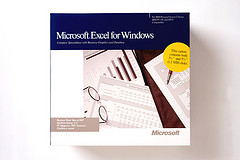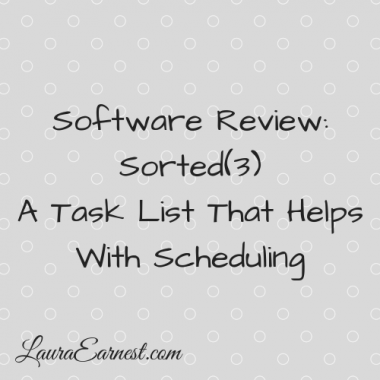
Boost Productivity In Excel
Wednesdays are simplicity days at SimpleProductivity blog.
One of the best ways that you can boost productivity at the computer is to learn the keyboard shortcuts for some of the most commonly used actions. Instead of grasping the mouse and clicking the Copy button, for example, you could press a couple of keys and get the same results.
Today we are going to look at some of those keyboard shortcuts in Excel.
Editing Shortcuts
Editing shortcuts are used to move things around. In the case of Excel, you will need to select the range of cells first, then perform one of the keyboard shortcuts.
- Cut. Control+x. Think of the x being like a scissors.
- Copy. Control+c. Think of the C in Copy.
- Paste. Control+v. Think if the v pointing to where you want to put the task.
- Undo. Control+z. Think of it being the last letter of the alphabet = last thing you did.
Formatting Shortcuts
In Excel, you will often want to have some emphasis on your text. In order to use these shortcuts, you will need to select the range of characters first, or if you want to apply it to the whole cell, then select the cell.
- Bold. Ctrl+b.
- Italics. Ctrl+i
- Underline. Ctrl+u
File Management
You can even do basic file management from the keyboard.
- Open. Ctrl + o
- New (default)Ctrl + n
- Save current document.Ctrl + s
- Print. Ctrl + p will bring up the print dialog box.
Accessing Anything In The Interface
All Office products are written so that they can be used without a mouse. In Word, you have a set of menus that will mimic everything you see in the toolbars.
- Accessing the menus. To access the menu, press the Alt key. This will access the menu bar (and show it if it has been hidden). From there you can press the key in the box, or the one that corresponds to the underlined letter, or use the arrow keys (left, right, down).
- In a dialog box. To navigate around a dialog box with your keyboard, use the Tab key to highlight the item you want and either press space (to toggle) or enter (to select a button) If you have multiple tabs, then you can also use your arrow keys to navigate.
Navigation
You don’t need a mouse to select areas of your sheet. When holding the shift key down, either with mouse or arrows, will result in selection.
- Highlighting with arrows. To highlight with arrows, hold the shift key down and use the arrows. This will allow you to highlight lines, words, or more.
- Go to the start of the row. Home
- Go to the start of the sheet. Ctrl+home
- Go to the end of the row. Ctrl+right arrow (this assumes that there are blank cells in between)
- Go to the end of the column. Ctrl+down arrow
- Go to the end of the sheet. Ctrl + right arrow, then ctrl+down arrow. (this will take you to the last cell non-empty cell in the sheet, but this might appear empty because it has a formula)
Selecting Ranges
- Selecting a range. Hold down the shift key and use your arrows to select the cells.
- Selecting the entire sheet Ctrl+home, then ctrl+shift+right arrow, then ctrl+shift+down arrow
- Selecting a range for a formula If you are in a formula that requires a start and end range, select the first cell with your arrows, then press the period (.) and use your arrows to select the rest of the range.
Formulas
Formulas are extremely useful in Excel – after all, it is a spreadsheet. But you don’t have to click through the menus to get to the ones you need. You can type any formula into Excel by going to the cell, and typing equals (=) followed by the formula.
- Sum This would be =sum(start location:end location)
- Square root. =sqrt(cell location)
- Trig functions. =sin(cell location); = cos(cell location) = tan(cell location)
- Average.=avg(start location:end location)
Copying Formulas Without The Mouse
One of the beauties of Excel is that you can start a formula, then copy it to other cells. You can do this without the mouse:
- Put your formula in one cell.
- Starting with that cell, select the range you want to copy (shift + arrow)
- Use the fill option from the Edit menu to fill right or fill down (Fill right key sequence: alt, e, i, r; Fill down key sequence: alt, e, i, d)
Learning a few simple shortcuts can save you a whole lot of time and wasted motion. Do you have a favorite shortcut not on the list? Or do you find shortcuts save you a lot of time? Share below.
Photo by Microsoft Sweden. Licensed under Creative Commons.




